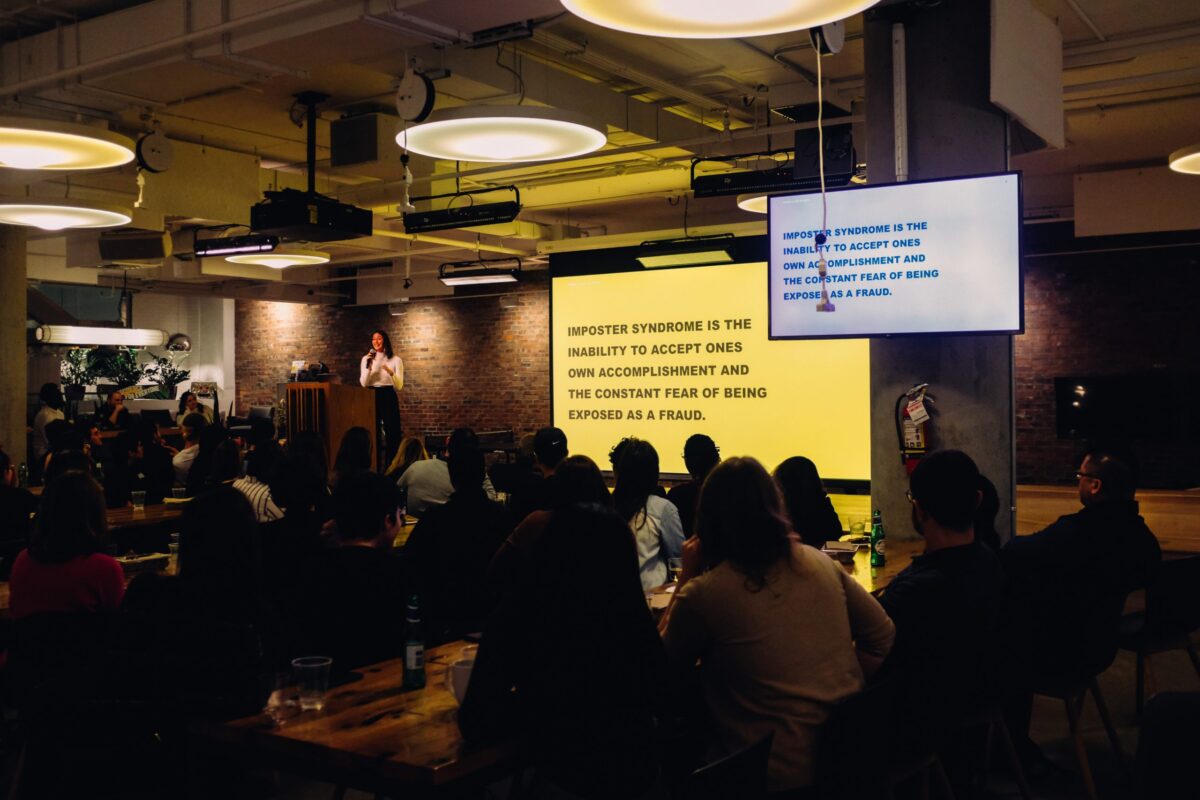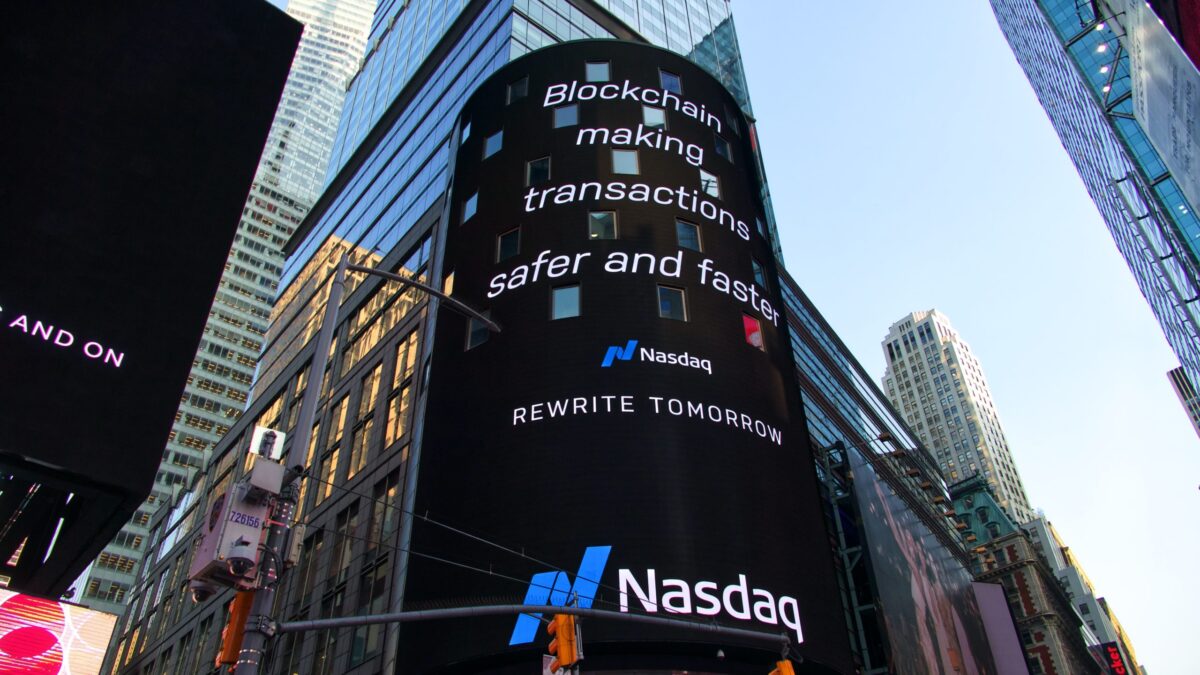
In this video, Maria describes how demonstrating humility will help you save face when you make mistakes during business meetings and presentations.

In this video, Maria describes how demonstrating humility will help you save face when you make mistakes during business meetings and presentations.

Many will tell you that we are already in the age of Big Data, and maybe we are. But the truth is that whatever pile of data we have today will look puny in just a few short years. Big Data keeps getting bigger, so whether you think we have already arrived or Big Data is around the corner, how can CMOs be ready for what comes next?
It’s not that complicated, actually. The most important step any CMO can take is to move to a data-driven decision-making process. What that means is no more “golden gut.” What that means is that we don’t ask the CMO what to do–we ask the data what to do. It doesn’t matter whether the data we have now is big or medium-sized. The truth is that most companies do a crappy job with small data.
How would your job be different if every time someone asked you to decide something, you asked what the data shows? And if there is no data, you asked how we could get some? And if no one knows how to get the data, you ask what kind of experiment can we run to get the data?
For some CMOs, that’s very threatening. They believe that their job, like any good executive, is to make the tough decisions. And that’s true. But what if the toughest decision you will ever have to make is to give up your own personal control and seek the data to make the decisions?
Data-driven decision-making is a culture change. It says that instead of believing in our own opinions, that we will focus on our customers’ opinions. When we focus on data that tells us what our customers want, it’s amazing what geniuses we become.
It feels like data-driven marketing is a loss of control. But what we need to accept is that depending on our own opinions is the most out of control we can be. Each decision that we make personal might feel under control, but competing against companies that decide based on data will quickly make us extremely uncomfortable–because they are making better decisions than we are. And in just a few years, we won’t be making decisions based on data–we will be providing rules for computers to make decisions based on data. We’ll do that because people can’t decide fast enough.
Have you reconsidered your reliance on data for decisions? Moving to data-driven processes prepares you for the onslaught of data that is coming for all of us.

Accelerate Your Market Positioning to Gain More Credibility, More Clients and More Sales
Quickly accelerate your brand awareness and expertise by effectively marketing yourself as the go-to expert within your niche market or industry. Learn how to become recognized as the authority and stand out in a crowded marketplace.
During this inspiring presentation, you will learn how to expand your value, increase your fees, and multiply your income streams to create more sales and profits.
Learn How To:

Are you wondering how to expand your business? Has a major segment of the market shifted away from buying your products or services? Are you questioning your marketing plan? There’s one simple answer you probably haven’t considered:
Write a book.
It’s true. This one thing—especially if it’s an actual printed book rather than a Kindle or eBook—has the power to grow your business beyond your expectations. You’ll experience a whole new world of opportunities simply by having your name on the cover of a book.
Authority
Imagine you’re at a conference or local networking group and you meet two CEOs who both specialize in business branding—something you know you need help with.
One CEO says all the right things. She’s been in business for years and worked with some top-notch business owners. She has great ideas for how she can help you solidify your branding and assist you with marketing.
The other has a similar history and story, with one added bonus: she’s just handed you a copy of her latest book. It’s a professionally printed, substantial publication that practically exudes confidence.
Which person do you think shows more authority in her field? The one with the book, of course. There really is nothing better when it comes to establishing your authority in any niche than having a book with your name on it.
At this point, I have written or coauthored more than 800 books, articles, online courses, chapters or case studies. This factor more than anything else helped people in my field get to know me.
Expertise
Why does a book speak so highly of you and establish your authority so well? Because it gives you a platform to show off your expertise. It’s like being invited to present on any topic you choose on the world’s largest stage.
Not only that, but your readers are a captive audience. They’re listening—in that moment—only to you. That’s a powerful position to be in, and one that gives you an opportunity to really show off your stuff.
Market Reach
No matter how many readers Google sends your way, no matter how much traffic your YouTube channel receives, nothing will ever compare to the number of potential readers Amazon and other online booksellers can bring your way.
Positioned correctly, your book can reach millions of new readers, and thousands of potential clients. Combine that with the expertise and authority we know comes with being a published author, and that’s a recipe for success that can’t be beat.
Better Than a Business Card
If you’ve ever been to a conference, you’ve no doubt collected a stack of business cards. You get home and toss them in a drawer, and six months later you throw them out, without ever having contacted the people who gave them to you.
But if one of those people handed you a book instead, what happened? You’ve likely read it (or at least leafed through it). You almost certainly didn’t throw it away. And you remember it—and the person who wrote it.
Press Opportunities
Turn on your television to any interview show, browse through Huffington Post, or listen to any of a number of popular podcasts or radio shows, and you’ll quickly see that most of the guest speakers and interviewees have written a book.
The fact is, interview shows depend on interesting, insightful guests to keep their audiences listening, and there’s no better applicant than an author. Writing a book will open up many, many opportunities for appearances that you may never have without your name on that cover.
Do you have to write a book to be successful? No. But there’s no denying the fact that a published author will find she has a much easier time growing her business than the business person who keeps putting it off until later.
Do you have a book in you? Contact me to discuss my editing and ghostwriting services. I’d love to see your book take shape.

Nope, it’s not Steven Spielberg, or even Dr. Seuss. It’s Hans Rosling.
Never heard of him? After today, you’ll not only have heard of him, but you’ll wish you’d done so years ago.
The late, great Dr. Hans Rosling passed away on February 9, 2017. A professor of public health, he was the master of taking arguably mundane data – and lots of it – and one of the most boring forms of visual presentation – the graph – and transforming them into a mesmerizing story that made you forget you were learning.
So for anyone out there who uses the excuse that the information you have to share “isn’t all that exciting” to defend why their presentations are uninspiring, after reading this post, that excuse no longer exists.
See for yourself in this BBC video where he analyzes the life-expectancy-to-income ratio of 200 countries over 200 years… in about four minutes. As you watch, you’ll be amazed at not only how much he accomplished in those four minutes, but at how much you actually learned… not to mention how much you enjoyed the experience in the process.
The key lesson for our purposes here is something he states in the first few seconds of the video: “I know that having the data isn’t enough. I have to show it in ways people both enjoy and understand.”
Talk about a one-two punch; let’s face it, most people are satisfied if they can get people to understand their data. The idea of combining that with having the audience actually enjoy hearing about it… that seems almost as likely as finding a unicorn.
There is huge differentiator that most people fail to grasp: the amount of information you present in no way naturally correlates to the amount of information the audience absorbs. That part is 100% up to you to make the information both comprehendible and ideally interesting, so it’s not just that the audience can understand what you’re saying, but they actively want to understand it, and then ask for more.
That’s why Professor Rosling was the master. For most of us, we’ll claim that of course global public health is important to us on a general level, but it’s not something we’ll go out of our way to learn about. But from the moment he starts talking, we are practically compelled to keep watching, genuinely curious to see where he goes next.
So what’s the secret sauce to being this good?
I’ve worked with a lot of people in this area, and there are some really important commonalities regarding the challenges that they face, and where Professor Rosling excels. Let’s break down the ingredients into three categories: Visual, Verbal and Vocal.
First: Visual. This one’s easy. As the adage says, “A picture is worth 1000 words.” When graphs or other visual aids are easy to see and understand, the audience just “gets it,” allowing you to share more information much more efficiently. His body language also flows with the picture, and matches his level of enthusiasm as he speaks, which makes it all feel very natural, and draws you in.
Second: Verbal. He’s a globally-renowned expert, but he doesn’t try to prove this by using lots of technical terms or speaking over the viewers’ heads. He uses language everyone can understand, and breaks his points down into distinct sentences with a clear beginning and end. It’s not a rambling stream of consciousness as he figures out what he wants to say. He is crystal-clear on what each point needs to be, and he delivers them on a silver platter, one by one, making it easily digestible for the audience.
Third: Vocal. Without looking at his script, how can you tell where sentences (and points) start and end? Because you can hear it. At the end of his sentences, you can hear where there is a period or exclamation point based on the intonation changes in his voice: there is a low drop for periods, and the sentence or last word may rise in pitch until the very last second and then quickly fall to indicate excitement, i.e. the exclamation point. Where a phrase is not the end of a sentence, his pitch often goes up to indicate a comma, and then the rest of the sentence follows, culminating in the voice-drop. And at the end of his sentences, there is a brief pause, which allows you to process what he just said, and prepares you for the next nugget to come.
(For those of you who need to hear/see some examples of these vocal concepts and the ones that follow, check this short little video here.)
Intonation contrasts – otherwise known as tonality, i.e. where you put the high and low pitch points in your speech – have an additional value beyond implying punctuation and grammar: they are chiefly responsible for conveying interest. He “punches” important key words with higher pitch and draws them out a bit in a way that sounds more enthusiastic. It captures the audience’s interest, and even makes it easier for them to cognitively process the key points, aiding in comprehension.
Plus, the audience will feed off the speaker’s energy before they process what they heard. Dr. Rosling genuinely loves his subject, and his passion for it comes through with each fact he shares, and it’s contagious.
As a point of contrast, reflect back on actor Ben Stein’s most infamous character, the economics teacher in Ferris Bueller’s Day Off, who epitomized the world’s most boring teacher. While that was funny in the movie, the sad truth is that he more accurately reflects the typical speech style of people at your average office meeting or presentation than Professor Rosling.
The good news is that the typical standard of mediocrity in how people share data can be raised, and I challenge you to do it. While you may not have all the fancy computer graphics at your disposal, you can use these simple verbal, vocal and visual strategies to tell the story of your data rather than just plod through your statistics one by one.
Better yet, you can also use his software to bring your data to life if you so choose. At Dr. Rosling’s site, Gapminder.org, he gives it to you for free through open licensing, and even shows you how to use it.
So thanks, Dr. Rosling, for inspiring the world in two ways: with all that you have done in the world of public health, and for modeling how to make even the most “boring” data compelling through the art of storytelling.
********
Do you have questions or comments about the issues in today’s post, want to know how to apply them, or how to help others with them? If so, contact me at
laura@vocalimpactproductions.com or click here to schedule a 20-minute focus call to discuss them with me personally!

Drive More Traffic and Gain High Value Clients
Discover how automated marketing funnels and data capture strategies will up your marketing to increase your online sales. Learn how Facebook ads, Webinars, Landing Pages and Video Marketing will move you ahead of the competition as the go-to expert.
Uncover innovative and strategic action steps to move you to the next level of online exposure. Get motivational with up-to-date business marketing strategies and solid business advice from a Global Marketing Expert with over two decades of experience.
Learn How To:

Power Speaking Skills: Strategies to Improve Pacing with the Power of the Pause:
Maria Guida, president of Successful Speaker, Inc. helps you speak with the poise, passion, and persuasive power of a Broadway actor. In this video, Maria tells you how to use the Power of the Pause when you speak. (This is Part 3 in the series called, “Engage Your Listeners by Allowing You Ideas to Land”).
The Successful Speaker, Inc. video series provides speaking strategies that will help you enhance your leadership presence when you give business presentations, speak with senior management, make sales calls, network, and more. The video series addresses every aspect of successful speaking, including how to sound authoritative, speak with credibility, master active listening, and engage your listeners. The videos also provide speaking strategies rooted in theatrical performance, because actors know how to move audiences. The result: you will become a more authoritative and successful speaker!
The Successful Speaker, Inc. videos will help you project star quality and get more YES’s in the workplace and on the speaking platform. Learn how to enhance your credibility: speak with stage presence, confidence, authority, and authenticity. Discover ways to engage your listeners: use vocal dynamics with impact, to make your communication sing. You will learn how acting improvisation can help you develop the ability to think quickly on your feet. You will also discover how to rehearse strategically with techniques that focus the mind and help you appear completely spontaneous.
There are many other videos about communication, public speaking and presentation skills hosted by Maria Guida and Successful Speaker, Inc. All of these videos are available free of charge on YouTube at Youtube.com/SuccessfulSpeaker
and also at www.successfulspeakerinc.com/blog.
And if you’d like to learn more about how to speak successfully for business, log onto our website and join our mailing list, to download additional, free tips for successful speaking. Visit www.successfulspeakerinc.com.

Over the last several posts, I’ve been sharing strategies on delivering a great performance in front of the camera – and by extension, when in front of a live audience even without a camera. If you haven’t seen them yet, here’s the link to my series of video shorts, “Capturing Your Confidence on Camera.”
This time, I want to share a couple of other great resources for delivering a confident, compelling, engaging performance, as both demonstrated and explained in two of my favorite TED Talks.
The first is more likely to appeal to the part of your brain that likes to read inspiring self-help psychology related books that explain why you do what you do and how to control your own destiny.
It’s your friendly neighborhood Harvard psychologist, Dr. Amy Cuddy, in her TED talk, “Your Body Language Shapes Who You Are.”
This video had two big take-aways. First are the very-real effects that your posture has on your hormonal balance, which subsequently can influence your psyche and sense of self-efficacy and confidence. If you knew that taking two minutes to yourself to hold a certain pose before giving a presentation or speaking on camera could change the quality of your delivery, you’d do it, wouldn’t you?
Second, her story of needing to project confidence at a time when she didn’t feel it, suffering from what some might call “the imposter syndrome,” (long before she was “THE” Amy Cuddy,) is something everyone can relate to. The way she managed to perform despite that fear, until she had beaten it, is inspiring..
It’s also humbling. After realizing everything she was up against – including severe cognitive damage from a car accident – you have to admit: if she can overcome that, there’s no reason you shouldn’t be able to overcome your fears too, and learn to speak with true confidence.
In contrast, the second video will appeal to the other side of your brain. The part that doesn’t want to have think too hard. Actually, it kind of reminds me of a Seinfeld episode. Why? Because it’s a whole talk about nothing.
It’s a talk about what academics might call “meta-strategies”… but we won’t call it that, because that sort of sucks all the fun out of it, which shouldn’t be allowed to happen after a perfectly good Seinfeld nod.
In “How to sound smart in your TEDx Talk,” Will Stephen steals the show at TEDxNewYork. He paces the stage and talks as if giving a real talk on some specific topic, all the while really just pointing out all the of his own little gestures, mannerisms, and vocal modulations as he does them, explaining why they make his talk engaging… or at least why they would if his talk actually had a more specific point.
It’s six minutes you’ll need to watch twice. The first time you’ll follow along with each point nodding, smiling, and thinking “oh my gosh, that’s so true!” Then at the end, you’ll realize, “oh my gosh, that IS true… wait a minute, I need to look at that again…”
As he uses each little gesture, and explains its value and its likely effect on you right at that moment, take note. The strategies are so simple, but each one engages, endears, and compels. His talk is entertaining and semi-facetious, but every one of his points is relevant, and easily applicable in any presentation preparation and delivery.
Ultimately, just remember that in any situation, you have control over much more than you realize, including how confident you feel, and how confident you look. Strike your pose. Emulate the characteristics you wish you had (i.e. “fake it ‘til you make it”.) Consider the little gestures and vocal cues that connect with the audience in different ways, and deliver them like you mean it.
Once you put it all together, the confidence will flow outward, and when you see how the audience responds to it, you’ll feed off that response and the confidence will become genuine. And there’s no better feeling than that!

You’ve been invited to be interviewed on camera for TV, a video podcast or other virtual event. Does the voice inside your head say:
A: “Woohoo, this is a great chance to get some major publicity, I can’t wait!”
B: “I think I’m going to throw up.”
Most people get nervous when being interviewed, and even more people get nervous at the idea of being on camera. Put the two together and you have a combo that makes the fight-or-flight reflex kick into overdrive.
Aside from checking to make sure there’s no spinach between your teeth, you need to have a strategy to get the result you want. Check out this quick video for some proactive measures you can take in advance to direct the interview where YOU want it to go.
On the one hand, there are all of the delivery details I’ve discussed in other videos in this series like body language, voice, and how to calm your nerves when on camera.
But for interviews, it’s all about having a game plan.
Creating Your Interview Game Plan
First, who is conducting the interview, and what is their agenda? Do they showcase leaders whose story will serve as an inspiration for others? Or are they more likely to try to shoot holes in your theory?
There’s a huge difference between being a guest on a weekday morning television talk show and an evening television news program. The daytime interviews tend to be friendly and just want an interesting story that their listeners will enjoy. Evening news programs are more interested in getting “the scoop.” They enjoy conflict and putting people on the spot, particularly if you espouse a principle that their following tends to disagree with economically or politically.
Knowing what their intention is in advance can help you determine your own goal.
• Do you want people to pull out their smartphones and order your product or sign a petition right then and there?
• Do you want to educate more people about a growing problem – and solutions?
• Do you need to debunk some myths?
Depending on your desired outcome, you will decide in advance what stories to tell, what evidence to share, and how explicitly or implicitly you want to invite others to act.
If the interviewer is more likely to play a little hardball and ask a few tough questions, prepare your answers in advance. At this point in your career, you know what objections and challenges people tend to raise, so be prepared with how you want to respond.
Most importantly, remember that an interview is a conversation.
• DON’T just go on a monologue of statistics.
• DO take a conversational approach
• DO engage the interviewer by using his or her name once in a while, and
• DO give short, clear answers to allow the interviewer to volley back and forth with you without having to cut you off to get a word in edgewise.
Of course, that’s only half the battle.
It’s Not (Just) What You Say…
Once you have a sense of what information you want to share, you need to practice how you say it. I strongly recommend writing down a few questions – tough ones and lob balls – and practice answering them, but video record yourself while you do it!
The recording serves several purposes. First it lets you see how you look when you’re answering it. Are you squirming or poised? Do you smile at appropriate times, laugh nervously, or never even crack a smile?
Second, it lets you see how you sound when answering the questions. When you listen to the recording, you’ll realize when you’re rambling, when you’ve left out an important detail, or when you’ve given a great, laser-focused answer. Do you say “Actually” in every sentence (what I call the educated person’s “um”), stutter your way through an answer when you aren’t sure what to say, or mumble so quietly that you have to turn the volume all the way up on your ear buds to even hear what you’re saying?
Ideally, you should record your practice several times until you have figured out what information you want to include or leave out, and can answer the easy AND the hard questions smoothly and confidently.
When you are a good conversationalist with engaging examples and confident delivery, that’s when the wider audience will give you points for acing the interview and taking home the win.
